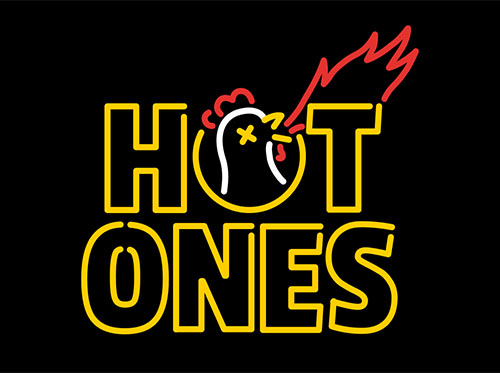2021 Predictions: 4 New Audio Buyers + Food Commerce Gets “Re-stacked”
In 2020 the attention economy accelerated into the passion economy, which we explained in our year end report. But yesterday’s breakthroughs are today’s baseline.
So how will the intersection of media, technology, and commerce evolve in 2021? In part one of this three-part series, we outline our projections below for the Audio and Food Media & Commerce industries.
2021 PREDICTION: Audio + Podcasting
New entrants will emerge in the audio buyer-verse. The result will be increased research, internal and external hires, and partner outreach. This will lead to a new wave of audio M&A in 2022 and 2023.
In 2019 and 2020, investments and acquisitions in the audio space began to boom. Some believe that this dramatic rise in valuations and M&A activity is a temporary “Audio Wars” bubble that’s being inflated by Spotify and a few select digital and traditional radio streamers, who, like the video platforms of the “Streaming Wars”, are willing to overpay in the short-term in order to build a competitive moat to own a greater share of audio revenues in the long-term.
This outlook means that demand for audio operators will soon come down. Diminishing the volume and valuations of exits in the space.
We disagree.
In 2020, we observed non-traditional buyers testing the audio M&A waters for both IP and platform technology. The list includes Sonos, Twitter, The New York Times, Amazon, and Sony Music. We also noticed many adjacent consumer industries launch new audio initiatives and partnerships. To us, this signals an upcoming wave of audio explorations, and soon-to-follow spending.
Specifically, in 2021 we expect an increasing amount of corporate strategy and business development departments, across a wide array of consumer industries, will pursue meaningful research and diligence into understanding the revenue, marketing, and brand-building opportunities in audio. Dedicated hires will be made, consultants will be engaged, partner outreach will increase, and audio build / buy budgets will be recommended in Q4 as part of 2022 planning.
These efforts will lay the foundation for more M&A by the second half of 2022, and particularly the beginning of 2023.
All the upstart audio companies that have recently launched or raised capital, riding the momentum of a hot audio market (including The Ringer and Barstool exits!), will be hot targets and pursued by a growing array of suitors. Meaning, even if the “Audio Wars” M&A activity slows down among the current crop of combatants, the new and well-capitalized entrants will drive said activity up again over the next 18 months.
Below are a few stakeholders in the audio ecosystem who have yet to aggressively pursue M&A.
-
Social Media: In 2020 we saw the emergence of “social audio”. Blame it on “Zoom fatigue”. Twitter acquired Breaker. Clubhouse raised a series A round at a $100 million valuation, despite still being in beta. Discord raised $100 million at a $7 billion valuation. And Telegram launched a group voice chat feature on its social messaging app. In their never-ending quest to expand their share of user time and engagement, the major social platforms continually add new experiences to their platforms in order to keep up with changing user habits and preferences (e.g. Facebook and Instagram adding video stories, Reels, and shopping; Twitter adding Fleets; Reddit acquiring Dubsmash). As social audio moves into the mainstream, we expect the social incumbents to become more acquisitive. Additionally, the existing social audio platforms may want to bolster their ownership of this emerging category by adding premium content to complement existing UGC offerings, and may therefore make acquisitions across the podcasting stack including IP, production, monetization, and data.
-
Hollywood (studios, broadcaster, streamers): In 2020 audio became a valuable weapon in the “Streaming Wars”. For marketing purposes, top streamers used podcasts to drive users to their platforms by developing “companion content” to generate cultural relevance around their tentpole programming. For content development and acquisition, we’ve seen the audio<>video IP pipeline flow both ways. Not only do top streamers use podcasts to incubate and discover valuable IP, formats, and personalities, which they adapt for video on their platforms, but they also extend popular video-native IP and talent properties into audio in order to fully monetize their popularity with fans. Many of the top SVOD platforms have also signaled that audio will become a more central component of their product experience (e.g. Netflix bringing an audio-only mode to its Android app, HBO Max announcing that it will soon feature podcasts on its platform, and rumors of Apple launching a subscription podcast service to bundle with AppleTV+). But despite this widespread evidence of the OTT world mobilizing around audio, none of the streamers (or parent companies) entered the M&A market until very recently, when Amazon acquired Wondery. We believe this is just the first shoe to drop. In 2020, Hollywood, with the notable exception of Disney, dipped its toe in the podcast waters. In 2021, we’ll see Hollywood fully dive in and lay the groundwork for an upcoming audio shopping spree.
-
Smart Speaker Manufacturers: As we covered in a recent industry report, the install base of smart speakers is projected to grow by 21% year over year, reaching 640 million by 2024. We believe the proliferation of smart speakers will lead to the “at-home-ification” of audio, resulting in the emergence of “microcasts” which will merge the AI functionality of smart speakers with the engaging warmth of podcasts. In the increasingly commodified smartspeaker market, a differentiated audio offering enabled by a proprietary content library, would be a significant advantage for any manufacturer. In 2020, Sonos invested in premium podcast producer, QCODE Media. We believe this is just the beginning of a new wave of investments and acquisitions from smart speaker brands — such as Amazon, Apple, Bose, Google, Samsung, and Sony — who will seek to build a superior and unique user experience by investing in the full stack of device-native audio, from hardware and software to production and distribution.
-
Sports: In 2020 the booming business trajectories of audio and sports media intersected. We saw everything including new player-centric network launches, bluechip strategic partnerships and joint ventures, M&A, capital raises, and a slew of new podcasts being launched by pro athletes. Collectively, this activity signaled the rise of sports audio, which we outlined in our two-part report. However, despite all this market activity, we have yet to see a frenzy of acquisitions other than that of Barstool and The Ringer. This will change in the latter half of 2021, and most markedly in 2022 (of note, we expect sports audio M&A to ramp the fastest within the audio category due to outsized content and user growth). For stakeholders throughout the ecosystem — from leagues, to broadcast partners, gambling operators, athletes, and digital publishers — whose core revenues come from stoking the flames of fandom and live engagement, podcasts will become a more valuable component in their overall content strategies. And rather than remain reliant on 3rd-party partner networks, we anticipate that many will choose to invest in bringing these capabilities in-house via M&A.
2021 PREDICTION: Food Media & Commerce
Brands, publishers, and celebrities will structure new investments and partnerships in the food commerce supply chain. There will be renewed focus on growing long term enterprise value via increased ownership, product control, and customer proximity. This reflects a natural evolution after licensing model success.
In 2019 to 2020, entertainment and lifestyle creators proved they could leverage their audience reach and influence to drive purchases in the food and beverage category. Our team specifically tracked over 35 launches.
Collectively these launches drove outsized revenues across multiple F&B sectors including:
-
Branded CPG Products like MeatEater selling out of its branded whiskey line in under a week, or Complex generating $10+ million in annual revenue through its “Hot Ones” hot sauce line.
-
Digitally-Powered Food Experiences like Mr. Beast’s ghost kitchen-powered chain of app-based virtual burger restaurants, which has a projected revenue potential of $300 million, or Barstool Sports’ “One Bite” pizza delivery app, which processed 100,000+ transactions in its first month.
-
IRL Food Experiences like the signature Travis Scott menu offering at McDonalds, which increased same store sales by 5%+, or Time Out’s food halls which generated $56 million in 2019.
-
Cookware & Kitchen Accessories like Food52 selling $40 million of products through its marketplace, or Buzzfeed’s food vertical, Tasty, which has sold 5 million units of its branded cookware products through its Walmart partnership.
However, despite the spectacular volume of transactions in F&B, many of these tastemaking brands and celebrities are only capturing a fraction of the value they’re creating.
The vast majority of launches are done via licensing partnerships, meaning the featured brand or personality only receives a royalty (on average 3 to 7% of revenues), which represents a substantial discount to the potential long-term enterprise value of an owned and operated approach.
To be clear, we’re not belittling the licensing model.
Dedicated commerce staffing, product development, inventory management, and setting up physical and e-commerce distribution are capabilities that are outside the core skillset of media operators, which is why they traditionally outsource these commerce duties in exchange for a small cut of revenues. Licensing is therefore an important step, but not the end game, in driving greater return for publishers and creators.
First you test the power of your brand to drive purchases in a new category through de-risked initiatives like brand sponsorships and affiliate deals. Then, you expand to licensing. Then, once you’ve validated your brand efficacy in a new consumer sales channel, you invest more deeply.
Entering 2021, many celebrities and brands in Food Media & Commerce have hit that inflection point. So now is the time to seize upon this unique moment and go bigger.
Whether through direct relationships with manufacturers and co-packers, renegotiated revenue shares with their F&B operating partners, joint operating ventures, or even M&A, influential brands, publishers, and personalities will seek to have more ownership and control over the supply chain in order to maximize the value they create.
And each operator will need to find the approach that best fits their brand, audience, assets, and goals.
For some of the publishers we’ve worked with, grocery and retail shelf placement is a key priority in order to drive new audience reach and broader brand awareness. This means finding operating partners with brick & mortar retail relationships (whether through internal partnership teams or external brokers), as well as the expertise to market effectively in this channel. For others, the priority is a direct-to-consumer distribution across their existing online and experiential physical event channels, which has different fulfillment, inventory management, storage needs, and shipping requirements compared to that of brick & mortar.
We’ve also worked with other publishers who are renegotiating their existing licensing deals to include a larger cut of revenues, as well as equity in their F&B partner’s company. In a similar spirit, some celebrities are forgoing near-term endorsement checks, and are instead working with a collective team of investors and operating partners to stand up new F&B ventures, in exchange for a significant equity stake to be associated with, and promote, the new brand over the long term. And we’ve even worked with an international conglomerate specializing in F&B manufacturing and distribution, which sought to acquire a significant food media brand in order to own the entire funnel, from raw materials and product development, to distribution, influence, and purchase.
Overall, each of the media and commerce sides of the Food consumer business are learning a lot about the other. And with more learning, we’re excited to see new and productive operating models emerge.
But regardless of how a media brand chooses to double down in the food commerce supply chain, enabling a better overall customer and fan experience must be the end goal. Because that, plus a higher margin business structure that can add tens of percentage points to the bottom line, is the best path to the 9-figure revenue figures we predict for those who get this strategy right.
Crawl before you walk. Walk before you run.
Over the past two years we’ve seen numerous content creators start to walk. In 2021, we’re excited to watch them run.
—
Ping us here at anytime. We love to hear from our readers.



